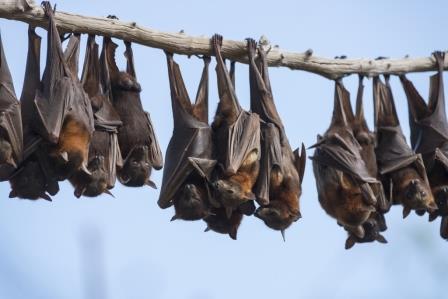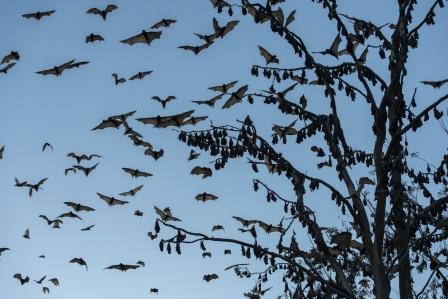Bats

There are four species of bats that are native to Australia. One of these species, the Little Red Flying Fox (Pteropus scapulatus), can be found in the South Burnett. This species feeds on flowering gum trees. During their nightime feeding they scatter pollen and seeds which can help with the reproductive processes of woodlands.
Flying Fox colonies create a number of issues for residents, including noise, odour and excessive droppings/guano. Flying Foxes can defecate in flight, splattering objects beneath their flight path with excrement. Whilst flying fox droppings on cars, washing and other surfaces is extremely annoying, the droppings do not not pose a serious health hazard.
Avoiding Contamination of Rainwater Tanks
To avoid the contamination of rainwater tanks with guano from bats, birds and other animals, keep tanks covered, chlorinate regularly and drain and clean the tank and area used for water collection on a regular basis. First flush diversion devices following rain is the best way of keeping your tank clean.
Health Implications
Bats and flying foxes can carry bacteria and viruses (e.g. Australian bat lyssavirus) which can be harmful to humans via the salvia of infected bats. The best protection against exposure to the viruses is to avoid handling bats or flying foxes. Disturbing an injured animal may cause it to bite or scratch therefore residents are urged not to handle injured flying foxes.
Hendra virus can also be transmitted to humans via close contact with infected horses (noting the natural host for Hendra virus is the flying fox). Horse owners are advised to seek further information from the Department of Agriculture and Fisheries.
Children should be warned of the dangers and encouraged not to touch or disturb flying foxes found on the ground.
Whilst the risk of health contracting health issues associated with bats or flying foxes is very low caution is still advised.
See these fact sheets
Council's Bat Management Plan
Council are working with the State Government and ecologists to develop a flying fox management plan for the Proston roost to identify suitable management options.

